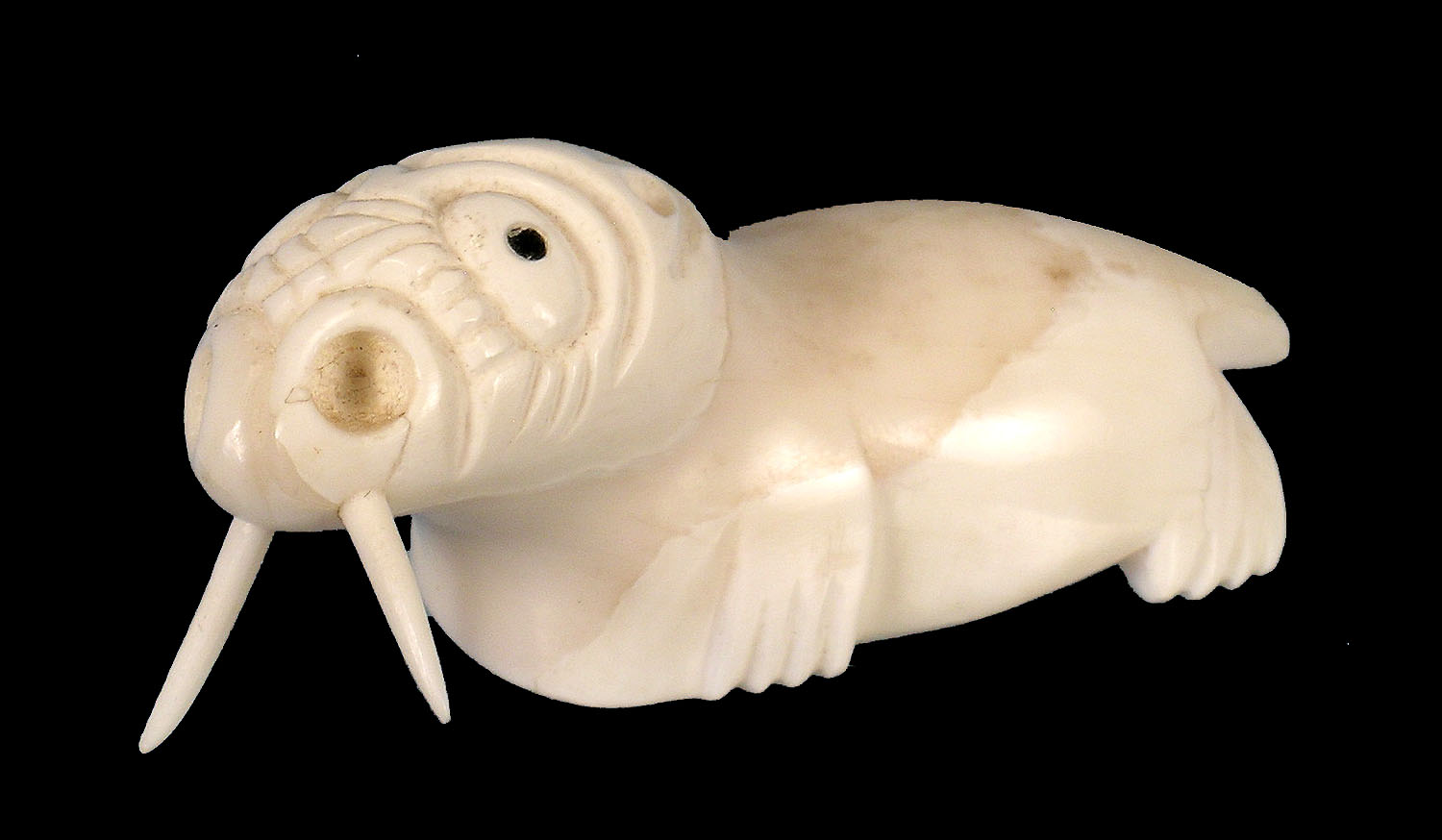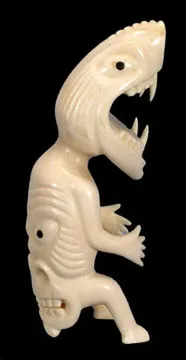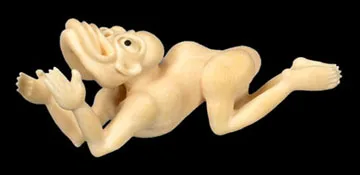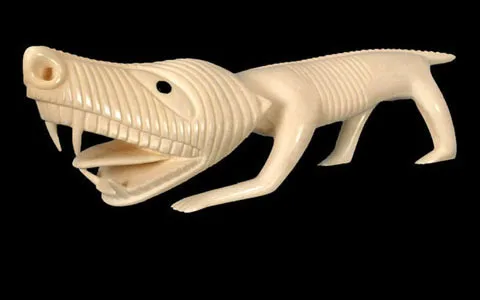Inuit Tupilaks
Inuit Tupilaks: The Cultural Significance of Inuit Tupilaks
Introduction
Inuit tupilaks that we offer for sale hold profound cultural importance in Inuit traditions. Inuit artisans carve these small, often grotesque figures from materials like bone, antler, or ivory. Rooted in ancient shamanic practices, tupilaks house powerful spirits capable of enacting revenge or offering protection.
Spiritual and Ritualistic Significance
In Inuit culture, tupilaks transcend mere artistic expression and embody potent spiritual significance. For instance, shamans performed rituals and incantations to animate these figures, harnessing their spiritual power for harm or protection. Furthermore, the creation and empowerment of a tupilak remained a closely guarded secret, passed down through generations. Consequently, this emphasizes the deep-rooted spiritual heritage of the Inuit people. Art of Greenland: Sculpture Crafts by Bodil Kaalund
Unique Designs and Mythological Influences
The designs of tupilaks stand out for their diversity, often representing mythical creatures or blending human and animal features. This variety reflects the rich mythological tapestry of Inuit culture. Each tupilak has been uniquely crafted, its appearance influenced by the creator’s specific intentions and the available materials. Moreover, the uniqueness of each figure underscores the individual stories and purposes they served. Therefore, the variety in designs also highlights the imaginative capacity and cultural depth of the Inuit artisans.
Modern Symbolism and Cultural Preservation
In contemporary times, tupilaks have evolved into symbols of Inuit heritage and artistry. Although their original spiritual purposes have waned, their craftsmanship and cultural symbolism remain significant. Today, artisans create these figures for tourists and collectors, serving as tangible connections to Inuit traditions and history. Additionally, the intricate designs and stories behind each piece captivate those interested in indigenous cultures.
Efforts to preserve the knowledge and skills involved in creating tupilaks have intensified, ensuring this unique aspect of Inuit heritage endures. For example, workshops and cultural programs teach younger generations the traditional methods and meanings associated with these powerful objects. Consequently, these initiatives are crucial in maintaining Greenland’s cultural landscape and keeping the legacy of tupilaks alive for future generations.
Conclusion
In conclusion, tupilaks are more than artistic carvings; they embody Inuit cultural and spiritual heritage. Their evolution from shamanic tools to symbols of cultural pride highlights their enduring significance. Through ongoing preservation efforts, the knowledge and traditions surrounding tupilaks continue to thrive. Ultimately, this ensures that this unique aspect of Inuit culture remains a vibrant and integral part of Greenland’s cultural identity.
To show-cast exceptional detail, many of the images will be a little slow loading. PLEASE be patient. THANK YOU!















